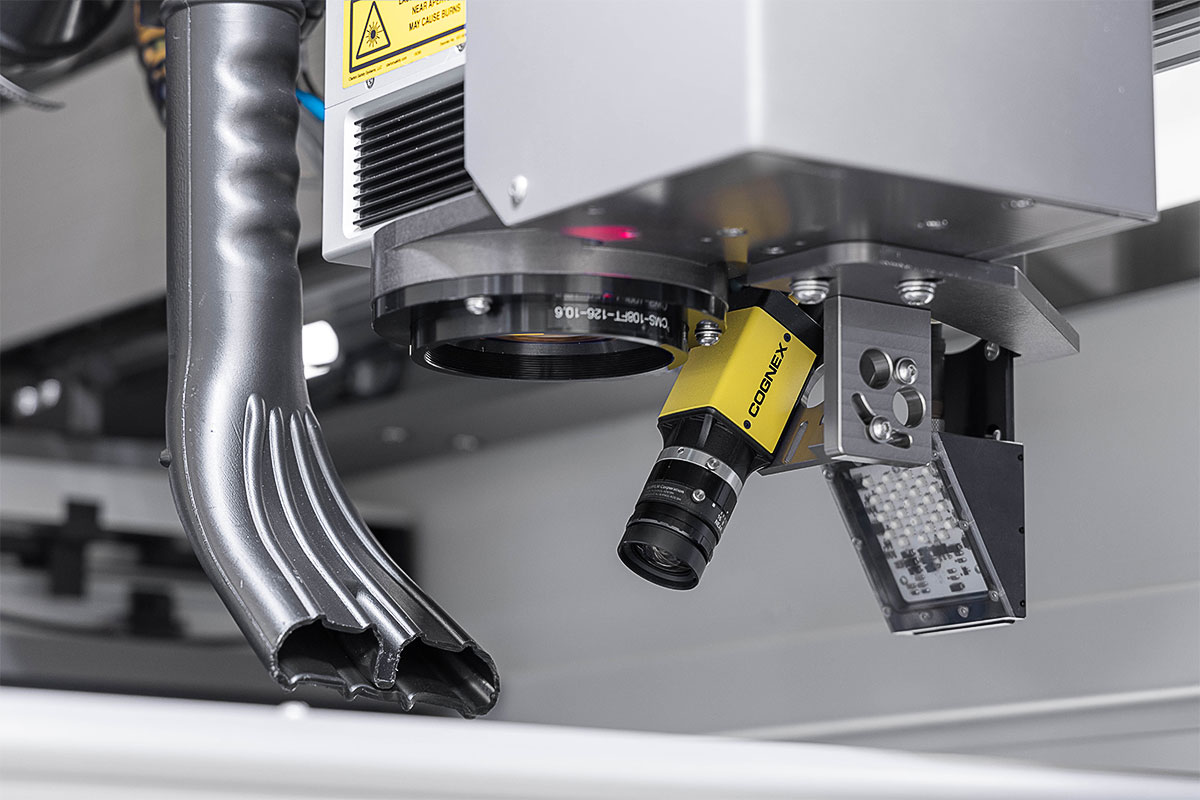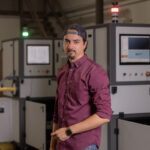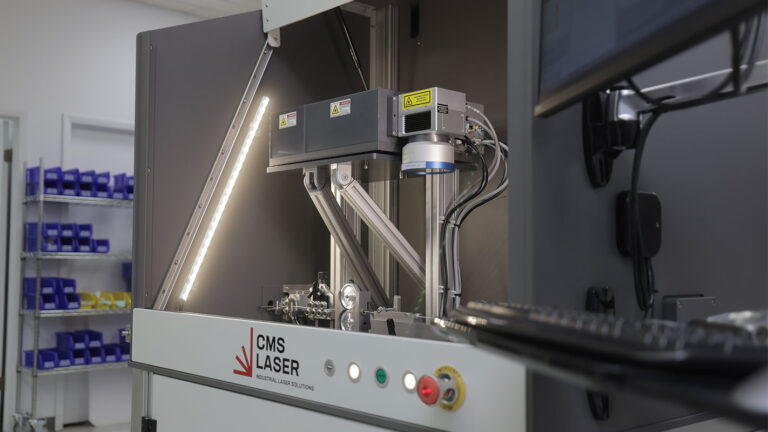At CMS Laser, our primary goal is to develop a laser-based solution that meets our clients’ manufacturing requirements and production goals. Ensuring a laser system is compatible with other production elements in a continuous processing flow is a common challenge. To address this challenge, one of the applications we pioneered and developed extensively is “on-the-fly” laser processing.
What is On-the-Fly Laser Processing?
On-the-fly laser processing requires the laser to perform its function while the product is in high-speed motion. With other types of automated systems, even when there is no need for human interaction, there is still “takt time” – time required for loading and unloading.
On-the-fly laser systems allow the parts to pass through the laser field, be lased and continue through the process or be collected, all without interruption. It eliminates the acceleration, deceleration, and some of the part movement that is associated with “takt time.”
While processing speed is dependent on many factors, we’ve developed laser systems capable of exceeding speeds of over 1,000 feet per minute. This exponential decrease in index has resulted in greater manufacturing production rates.
Plastic extrusion lines are an excellent example of a manufacturing process that requires on-the-fly laser processing. As we discussed in a recent post, laser applications in plastic extrusion lines call for speed, accuracy and 24/7 reliability. In our next blog we will discuss how Control Micro Systems incorporated these cornerstones into a laser system designed for an extrusion line manufacturing irrigation drip tape involving on-the-fly laser marking and laser slitting. But, for this blog, let’s discuss the requirements, challenges and solutions to on-the-fly laser processing in more detail.
Challenges to On-the-Fly Laser Processing for a Plastic Extrusion Line
There are four primary challenges in integrating a laser into a plastic extrusion line. Let’s take a look:
- Choosing the right laser: As with any laser application, it’s essential to find the right laser source. CMS Laser’s Applications Development Lab will help determine what laser and optics configuration best performs the application in the most cost effective and robust way. Specific laser wavelengths and power levels are selected for these applications based on the material composition, including colors, mark or cut quality, engineering considerations and extrusion line speed.
- Accuracy and repeatability: Extrusion lines can move at high velocities and require precise laser beam steering, if synchronization is to be maintained. Continuous, accurate and robust measurement of the line speed is also essential, especially when line velocity is not constant.
- Control: With laser slitting, cutting, and drilling, the laser power and working distance must be well-controlled. The laser’s energy should not impact or damage other parts of the product. This requires not only choosing the correct laser and optics, proven engineering and design practices, but also close interaction with the customer and understanding the complete manufacturing line.
- Ability to run 24/7: Due to the nature of the extrusion process, on-the-fly laser systems must be able to run on a 24/7 cycle. For example, a manufacturer is working with molten plastic and as a result, the operation must move swiftly in order for the plastic to mold correctly. If the laser is not operating properly, the extrusion line doesn’t stop, meaning once an operator becomes aware of an issue, the section of defective product has to be discarded.
Laser Solution for Irrigation Drip Tape
Let’s take a look at the key points of how we’re able to overcome the challenges of integrating a laser into a plastic extrusion line.
1. Powerful Software
CMS Laser’s custom software technique provides meticulous control over the laser settings in order to achieve accurate and consistent results for slitting, cutting, drilling, or marking extruded parts.
Our on-the-fly machines have the ability keep track of the position of the material as it travels through the laser field to ensure that each step is placed in the required position in the following ways:
- User can input line speeds prior to starting the process while software calculates positions.
- Encoder can be used to track position of tape in real time.
- Camera vision system can monitor alignment of extrusion and process step in the laser field and software can correct any misalignment on-the-fly.
2. Rigorous Testing
CMS Laser builds systems that enable the continuous 24/7 operation to accommodate the extrusion production line. Through our rigorous experiments in the Applications Laboratory, long-term prototype testing, and over two decades of worldwide deployment of production systems, CMS Laser has developed the engineering best practices for reliable production systems.
3. Precise Control
The combination of custom software and the correct laser for the application ensures the precise control of the laser settings. All laser processes are proven in the Applications Laboratory prior to designing, or even quoting a production system. During this process, the laser, laser settings, optics and any ancillary equipment are chosen and tested. Settings are varied to determine that the working envelope exceeds the real world environment.
4. Verification
After cutting, a camera vision system can be used to check samples of the cut slits to ensure positioning is within an acceptable range. If it senses a divergence from the required position, the software will correct for later processing.
Final Thoughts
Integrating an on-the-fly laser system into a plastic extrusion line is a complex endeavor with many moving pieces, literally and figuratively. Speed, accuracy and reliability need to be incorporated into each part of the system. Every laser solution offers unique challenges and specific requirements, which is why our development and engineering team takes the time to find the best solution for your application.
Are you looking to integrate lasers into your plastic extrusion line? Contact us today to discuss your needs and specifications.








0 comments
Leave a comment.